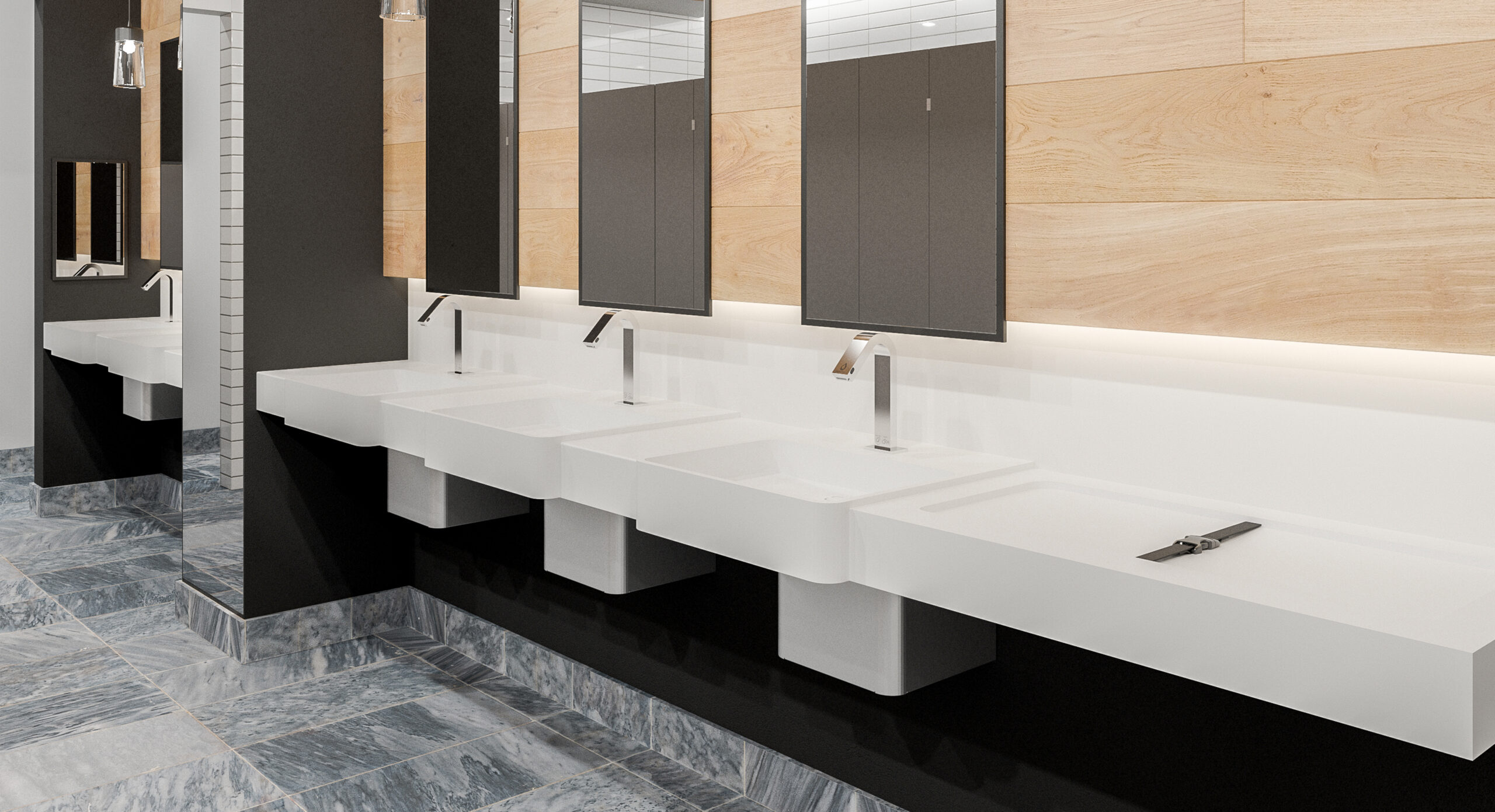Anti-Microbial Lavatory Systems
COVID-19 has changed the way we live in a matter of months. In addition to the economic and psychological impact of social distancing, there’s a newfound fear of infectious disease and carriers like viruses and bacteria. In the long term, individuals, businesses, and governments are expected to shift focus towards creating cleaner and more hygienic places to live and work.
Businesses are already increasing the demand for antimicrobial building materials, especially in publicly accessible spaces like bathrooms. While there’s still no product proven to protect against COVID-19 and coronaviruses, the use of antimicrobials is in line with CDC guidelines and remains a great first line of defense.
Antimicrobial surfaces on bathroom fixtures have been proven to actively reduce microorganism populations, prevent cross contamination, and stop the spread of infectious disease. Antimicrobial lavatory systems can be part of infection control procedures in facilities with high hygiene standards. These include healthcare and food preparation facilities.
Many hospitals already use antimicrobial lavatory systems and other fixtures to control infection and minimize the transmission of disease-causing pathogens. Antimicrobial sinks can be installed in patient rooms, intensive care units (ICUs), restrooms, laboratories, and housekeeping areas.
Antimicrobial Lavatory Surfaces
Plumbing fixture manufacturers use different types of antimicrobial surfaces. The most common are baked on, powder-coat finishes with an antimicrobial agent and plastic or composite materials with the antimicrobial agent mixed into the polymer during processing. The antimicrobial agent usually contains silver ions to neutralize microbes on surfaces.
The antimicrobial agent is released on contact with moisture and is designed to be effective against a range of microorganisms. The mechanism of action is simple: The positively-charged antimicrobial agent attracts negatively-charged microbes when in contact with moisture. The resulting electrical imbalance cause the microbe’s cell wall to burst and kill the organism.
Cleaning products and disinfectants do not reduce the effectiveness of the antimicrobial agent, which remains active throughout the product’s lifetime. Antimicrobial agents can be used in a variety of fixtures, including lavatory systems, toilets, shower pans, sinks, door handles, toilet flushes, and faucet levers.
Benefits of Antimicrobial Lavatory Systems
Prevents the buildup of bacteria, mold, and mildew. Antimicrobial lavatory systems are proven effective against microorganisms. Antibacterial properties combined with solid surfaces prevent the buildup of dirt, mold, and mildew.
Improves hand hygiene. Hand hygiene is one of the best ways to prevent disease transmission. Antimicrobial lavatory systems actively kill bacteria and prevent cross contamination to ensure that hands stay clean after washing.
Resists stains. Antimicrobial surfaces are designed to be durable and stain resistant. The material won’t burn, stain, or dissipate even when using chemical disinfectant. Dirt can easily be wiped off or scrubbed away with household cleaning products. Stain-resistant fixtures keep facilities clean and aesthetic.
Safe for food preparation. Some antimicrobial lavatory systems are designed specifically for handwashing use only, while others are safe for use in food preparation facilities. Check with the manufacturer to make sure you are getting the right type for your facility.
Resource efficient. Many antimicrobial lavatory systems are resource efficient and meet or exceed LEED requirements. Installing these fixtures reduces waste and shows customers that you care for the environment.
Durable. Some antimicrobial lavatory systems are designed to stand up to the heaviest abuse. These fixtures are ideal for behavioral healthcare settings as well as hospitals. Spend less money on repairs and maintenance by choosing high-quality bathroom fixtures.
Aesthetic. Most manufacturers produce antimicrobial lavatory systems that are both functional and aesthetic. Choose from an array of colors to complement existing layouts or new builds and install modular units to fit your space exactly. Some units can even be customized to exact requirements.
Make customers and patients feel at home. Institutional fixtures tend to be cold and ugly. Modern antimicrobial lavatory systems are like those you would normally find in residential settings. These add a touch of home to any space and make users feel at ease.
Seamless design. Antimicrobial solid surface lavatories are seamless. This means no grooves or crevices where bacteria can hide. Seamless designs not only look modern and beautiful, they also aid in infection control.
No need to seal or paint. Antimicrobial solid surface fixtures are low maintenance by design. No need to reseal or paint every few months. Dirt, grease, and stains are easily removed with household cleaners or abrasive material.
Helps businesses save money. Antimicrobial lavatory systems made from high-quality materials tend to be more expensive than standard fixtures, but help businesses save money in the long run. Durability, resource efficiency, and reduced maintenance help reduce bills and costs.
To learn more, visit our page on lavatory systems or contact us today!

